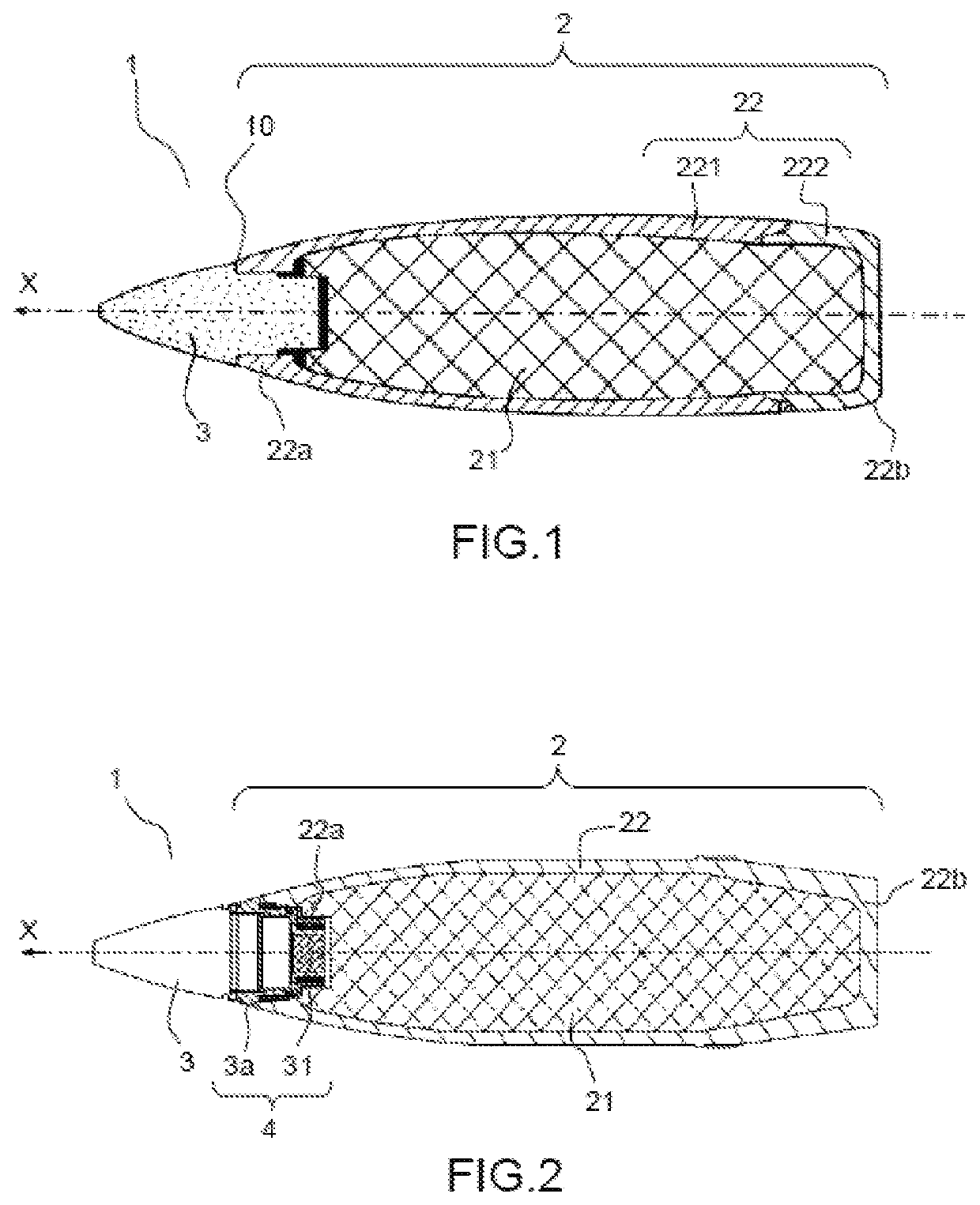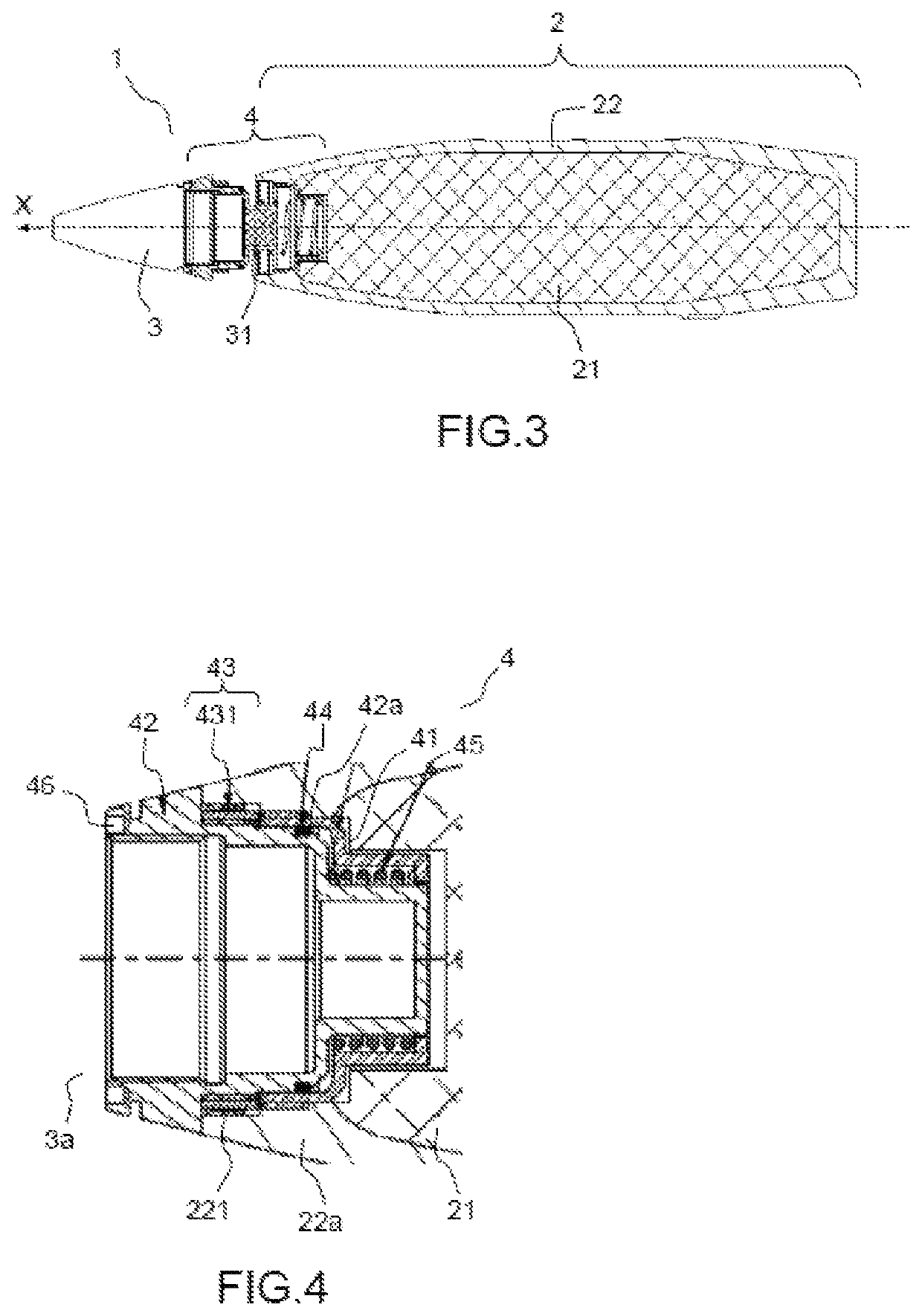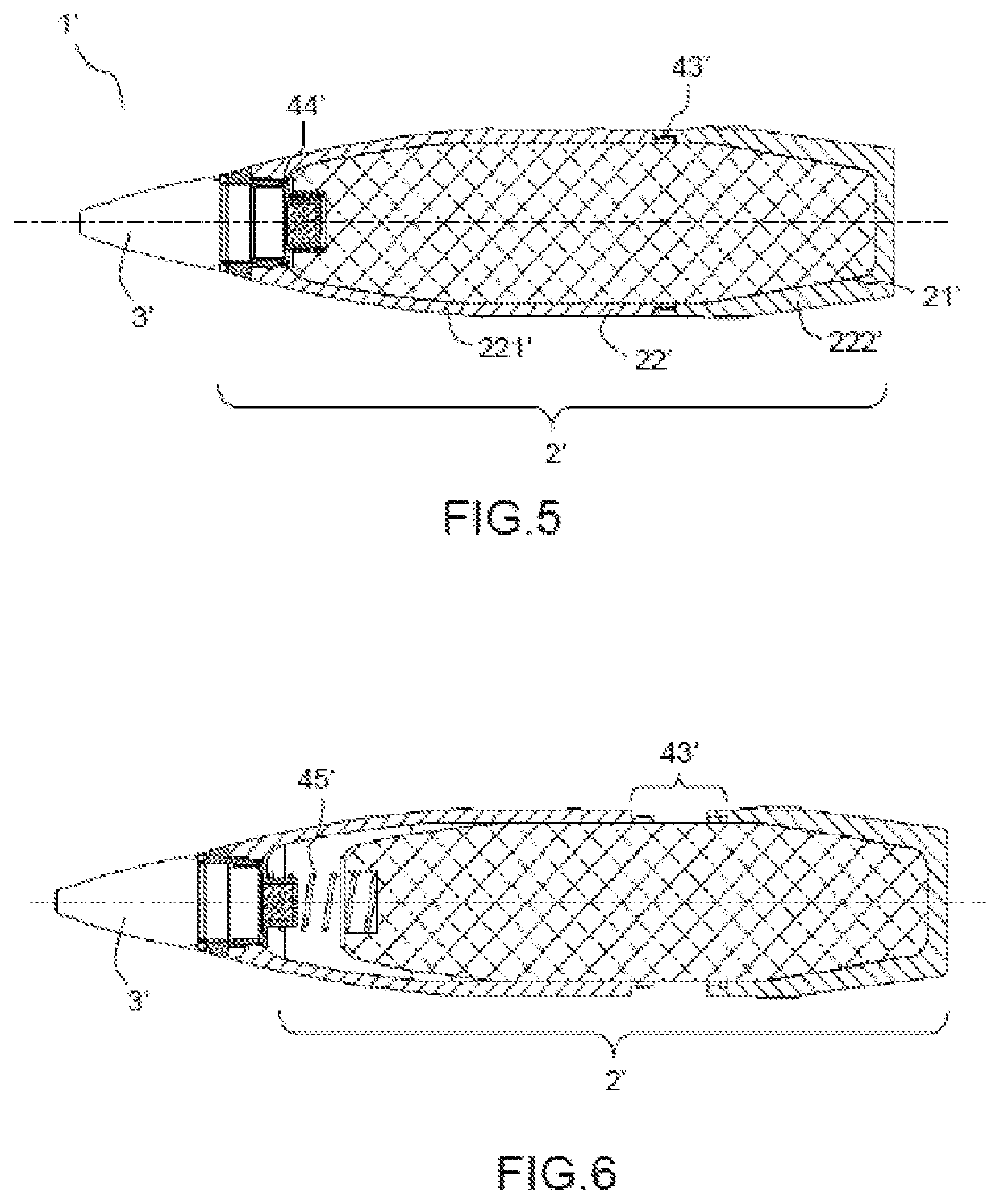Device for venting an explosive charge and munition equipped with such a device
a technology of explosive charge and device, which is applied in the direction of ammunition projectiles, weapons, ammunition storage, etc., can solve the problems of significant human and material consequences, explosive charge explosion in undesired manner, and exposure of weapons to attack, so as to reduce the sensitivity of weapons and be simple to manufacture and use.
- Summary
- Abstract
- Description
- Claims
- Application Information
AI Technical Summary
Benefits of technology
Problems solved by technology
Method used
Image
Examples
Embodiment Construction
[0075]FIG. 1 was described in the “Prior art” section of the present description and will not be revisited here.
[0076]FIGS. 2, 3 and 4 depict a first example of a venting device 4 according to the invention, seen in the closed configuration (device not triggered) and in the open configuration (device triggered). They readopt the same numerical references as FIG. 1 for elements that are in common with FIG. 1.
[0077]FIGS. 2, 3 and 4 illustrate a projectile element 1 for a munition. The propulsive element of the munition has not been depicted in the figures. The projectile element 1 is an element that is elongate in the longitudinal direction X and exhibits symmetry with respect to said longitudinal direction.
[0078]The projectile element 1 comprises a first part 2 containing the explosive charge 21 and a second part 3 comprising an actuating element for triggering the explosive charge. In FIG. 2, the first and second parts are depicted as solidly joined together (in the so-called “close...
PUM
 Login to View More
Login to View More Abstract
Description
Claims
Application Information
 Login to View More
Login to View More - R&D
- Intellectual Property
- Life Sciences
- Materials
- Tech Scout
- Unparalleled Data Quality
- Higher Quality Content
- 60% Fewer Hallucinations
Browse by: Latest US Patents, China's latest patents, Technical Efficacy Thesaurus, Application Domain, Technology Topic, Popular Technical Reports.
© 2025 PatSnap. All rights reserved.Legal|Privacy policy|Modern Slavery Act Transparency Statement|Sitemap|About US| Contact US: help@patsnap.com



